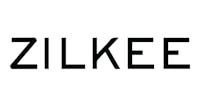How Much Does Hard Drive Recovery Cost?
Introduction
In the digital age, data is invaluable. Unfortunately, data loss due to hard drive failure can be a common occurrence. The cost of recovering this data varies significantly depending on the damage to the hard drive and the complexity of the recovery process. This comprehensive guide explores various scenarios to provide an in-depth understanding of hard drive recovery costs.
1. Assessing the Hard Drive's Condition
a. Physical Damage
- Description: This involves scenarios where the hard drive's physical components, like the spinning platters, read/write heads, or the motor, are damaged due to impacts, drops, or manufacturing defects.
- Recovery Process: Specialists work in a dust-free cleanroom to disassemble, repair, or replace damaged parts and attempt data recovery.
- Cost Factors: Costs are higher due to the need for specialized equipment, cleanroom environment, and highly skilled technicians.
- Estimated Cost Range: $700 - $2,000, varying based on the extent of the damage and the cost of replacement parts.
Service Options:
- DriveSavers: Known for their advanced cleanroom technology and high success rate in recovering data from physically damaged drives.
- Secure Data Recovery: Offers specialized services for physically damaged drives with a focus on maintaining data confidentiality.
- WeRecoverData: Recognized for their expertise in dealing with complex physical damage scenarios, including water and fire damage.
b. Logical Corruption
- Description: Issues arise from software problems, like corruption in the file system, virus attacks, or accidental data deletion.
- Recovery Process: Software tools are employed to scan, reconstruct, and recover data from the corrupted file systems.
- Cost Factors: Less expensive than physical damage recovery as it usually doesn't require specialized hardware tools.
- Estimated Cost Range: $300 - $1,000, depending on the complexity of the data structure and the software used for recovery.
Service Options:
- EaseUS Data Recovery Wizard: A user-friendly tool effective for recovering data lost due to accidental deletion, formatting, or partition loss.
- Stellar Data Recovery: Known for its robust performance in recovering a wide range of file types and formats.
- Recuva: A cost-effective option for smaller-scale data recovery needs, especially suitable for individual users.
2. The Computer's Role in Data Loss
a. Faulty Computer, Intact Hard Drive
- Scenario: When the computer itself fails (due to motherboard issues, power supply problems, etc.) but the hard drive is still functional.
- Recovery Process: Involves safely removing the hard drive from the defunct computer and connecting it to a working one to transfer the data.
- Cost Considerations: This is generally the least expensive scenario as it involves basic labor for data transfer without the need for complex recovery processes.
- Estimated Cost Range: $100 - $300, mainly labor costs and potential software required for data transfer.
b. Hard Drive Failure in a Functional Computer
- Scenario: The computer operates correctly, but the hard drive fails, exhibiting symptoms like clicking noises, not being recognized, or error messages during boot-up.
- Recovery Process & Cost: The cost and process are similar to the scenarios outlined in 'Assessing the Hard Drive's Condition'.
3. Factors Influencing Recovery Costs
a. Data Recovery Service Level
- Options: Services offer various tiers, from standard (less urgent) to emergency (critical data recovery with expedited service).
- Impact on Cost: Emergency or expedited services are priced higher due to the immediate attention and resources allocated.
b. Data Size and Complexity
- Consideration: Larger storage capacities or complex setups like RAID arrays require more time and expertise to recover.
- Cost Impact: The larger the size and the more complex the setup, the higher the cost due to increased labor and technical difficulty.
c. Success Rates
- Relevance: Services with higher success rates often command higher fees due to their expertise, advanced technology, and experienced technicians.
4. Choosing a Recovery Service
a. Reputation and Expertise
- Advice: Research and select services with positive reviews, high success rates, and proven expertise in handling similar data loss scenarios.
b. Cost Transparency
- Expectation: Reputable services should provide clear upfront estimates without hidden fees.
c. No Data, No Charge Policies
- Benefit: Some services offer a policy where you are only charged if they successfully recover your data, reducing financial risk.
5. DIY Recovery: When is it Viable?
a. Software-Based Recovery
- Applicability: Suitable for non-physical data loss like accidental deletion or logical corruption.
- Risk: Inappropriate software usage or recovery attempts on failing drives can lead to irreversible data loss.
- Cost: Recovery software ranges from free open-source tools to premium products costing around $100.
b. Using Zilkee Ultra Recovery Converter
- Scenario: Ideal for extracting files from an old, intact hard drive to a new functional computer.
- How it Works: The Zilkee Ultra Recovery Converter is a tool that facilitates the connection of an old hard drive to a new computer. It acts as an interface, allowing the new computer to read the old drive as an external USB storage device.
- We have a comprehensive guide on using the Zilkee Ultra Recovery Converter here
Summary:
If your hard drive is physically damaged, you will need to bring it to a physical location where specialists can disable the unit. Get ready for a hefty price tag.
If your data is corrupted, there are several software solutions that can help, and the cost is less than with physical damage.
If your hard drive is intact, you can easily extract the data yourself using the Zilkee Ultra Recovery Converter, currently on sale here
Issues? Consult our Troubleshooting FAQ



